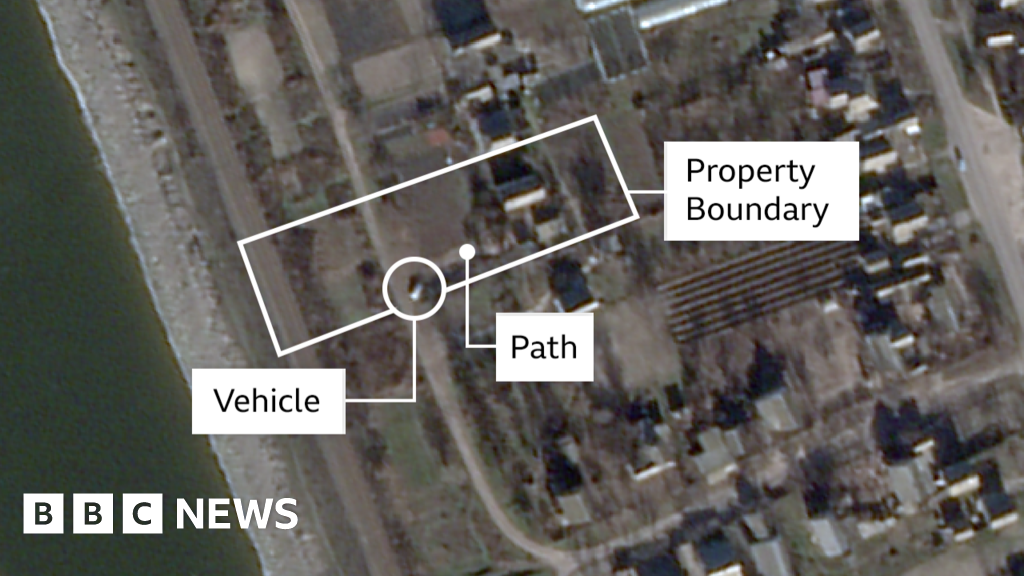Saturn's moon, Enceladus, could harbour alien life deep within its underground oceans of water, according to the European Space Agency (ESA).
Although the moon may appear barren, near the South Pole, tiny grains of ice are constantly being spewed into space through cracks in the icy surface.
Using data collected by the Cassini spacecraft, scientists have found that these ice crystals are packed with complex organic molecules.
According to a new study, some of these molecules could be part of the chain of chemical reactions that ultimately lead to life.
The researchers say this discovery means Enceladus now 'ticks all the boxes' to be a world capable of supporting life.
The moon has a constant supply of liquid water, a source of energy from hydrothermal vents, and the right set of chemical elements and complex organic molecules.
This isn't necessarily proof that life already exists on Enceladus, but it makes it much more likely that Saturn's moon is habitable.
Lead researcher Dr Nozair Khawaja, of Freie Universität Berlin, says: 'Even not finding life on Enceladus would be a huge discovery, because it raises serious questions about why life is not present in such an environment when the right conditions are there.'
Scientists have found that grains of ice spewed from Enceladus, Saturn's sixth–largest moon, contain organic compounds that could lead to life. Pictured: Enceladus' south pole as seen by the Cassini spacecraft
The European Space Agency found that water forced up from the underground ocean carried a set of complex organic molecules that are likely produced by chemical reactions around deep hydrothermal vents
What is Enceladus?
Enceladus is Saturn's sixth–largest moon, at 313 miles wide (504 kilometres).
It is an icy satellite with hydrothermal activity – a rare combination – with vents spewing water vapour and ice particles out from a global ocean buried beneath the moon's frozen crust.
According to NASA observations, the plume includes organic compounds, volatile gases, carbon dioxide, carbon monoxide, salts, and silica.
Microbes on our planet either produce these compounds or use them for growth, leading some to speculate that tiny organisms live in Enceladus' hidden ocean.
With a diameter of 310 miles (500 km) – about as wide as Arizona – Enceladus is Saturn's sixth–largest moon.
On the surface, conditions are exceptionally cold with temperatures as low as –201°C (–330°F).
However, in 2005, scientists discovered that a huge liquid ocean was actually trapped beneath the icy shell.
Jets of water erupt like geysers through cracks near the South Pole and, while some fall back down to the surface, some escape and form a ring around Saturn that traces the moon's orbit.
When the Cassini spacecraft flew through Saturn's rings, it took samples of these ice grains and found that they showed signs of complex chemical reactions that could be associated with life.
Dr Khawaja says: 'Cassini was detecting samples from Enceladus all the time as it flew through Saturn's E ring.
'We had already found many organic molecules in these ice grains, including precursors for amino acids.'
But some of these grains were hundreds of years old, so the scientists couldn't be sure whether the chemicals within had been altered by radiation from the sun.
In 2005, the Cassini spacecraft discovered striking tectonic faults at the south pole known as 'tiger stripes' (bottom right). These allow ice to escape from the oceans into space
Some of the ice falls back to the lunar surface, but much of it escapes into space, where it forms a ring around Saturn. In 2005, the Cassini spacecraft gathered samples from this ring and found that the ice contained organic molecules. Pictured: Artist's impression of Enceladus' surface
That changed when Cassini flew straight through Enceladus' spray in 2008, gathering ice crystals on its Cosmic Dust Analyser (CDA) as they emerged from the moon's interior.
As Cassini whipped through the cloud at 11 miles per second (18 km/s), it gathered the freshest and fastest ever collected.
That speed actually makes a big difference to the quality of the data, since it helps scientists separate water from other interesting molecules.
'At lower impact speeds, the ice shatters, and the signal from clusters of water molecules can hide the signal from certain organic molecules,' explains Dr Khawaja.
'But when the ice grains hit CDA fast, water molecules don't cluster, and we have a chance to see these previously hidden signals.'
After spending years working through the vast amounts of data collected by Cassini, Dr Khawaja and his co–authors have finally confirmed that these fresh ice crystals also contain organic molecules.
Those molecules included some that had been found around Saturn and some new chemicals that hadn't been detected before.
That means the molecules found in Saturn's ring and in Enceladus' ice geyser must be formed within the moon's ocean, not created later by reactions with solar radiation.
Cassini (artist's impression) was able to fly directly through the plumes of ice emerging from the south pole and gather tiny particles of ice at extremely high speeds. This proved that the organic molecules found in Saturn's ring were formed in Enceladus' ocean
On Earth, these molecules are part of the chemical reactions that lead to life. This means that the moon now 'ticks all the boxes' to be a habitable world capable of sustaining living organisms
On Earth, these organic molecules are involved in the chains of chemical reactions which lead to life, raising the tantalising possibility that Enceladus could be home to life.
Dr Khawaja says: 'There are many possible pathways from the organic molecules we found in the Cassini data to potentially biologically relevant compounds, which enhances the likelihood that the moon is habitable.'
In the future, ESA is planning to launch a mission to Enceladus that will collect more grains of ice from the South Pole plumes and even land on the moon's surface.
This would be the first time that any space agency has landed on Enceladus and could reveal more details about the possible conditions for life.
WHAT DID CASSINI DISCOVER DURING ITS 20-YEAR MISSION TO SATURN?
Cassini launched from Cape Canaveral, Florida in 1997, then spent seven years in transit followed by 13 years orbiting Saturn.
An artist's impression of the Cassini spacecraft studying Saturn
In 2000 it spent six months studying Jupiter before reaching Saturn in 2004.
In that time, it discovered six more moons around Saturn, three-dimensional structures towering above Saturn's rings, and a giant storm that raged across the planet for nearly a year.
On 13 December 2004 it made its first flyby of Saturn's moons Titan and Dione.
On 24 December it released the European Space Agency-built Huygens probe on Saturn's moon Titan to study its atmosphere and surface composition.
There it discovered eerie hydrocarbon lakes made from ethane and methane.
In 2008, Cassini completed its primary mission to explore the Saturn system and began its mission extension (the Cassini Equinox Mission).
In 2010 it began its second mission (Cassini Solstice Mission) which lasted until it exploded in Saturn's atmosphere.
In December 2011, Cassini obtained the highest resolution images of Saturn's moon Enceladus.
In December of the following year it tracked the transit of Venus to test the feasibility of observing planets outside our solar system.
In March 2013 Cassini made the last flyby of Saturn's moon Rhea and measured its internal structure and gravitational pull.
Cassini didn't just study Saturn - it also captured incredible views of its many moons. In the image above, Saturn's moon Enceladus can be seen drifting before the rings and the tiny moon Pandora. It was captured on Nov. 1, 2009, with the entire scene is backlit by the Sun
In July of that year Cassini captured a black-lit Saturn to examine the rings in fine detail and also captured an image of Earth.
In April of this year it completed its closest flyby of Titan and started its Grande Finale orbit which finished on September 15.
'The mission has changed the way we think of where life may have developed beyond our Earth,' said Andrew Coates, head of the Planetary Science Group at Mullard Space Science Laboratory at University College London.
'As well as Mars, outer planet moons like Enceladus, Europa and even Titan are now top contenders for life elsewhere,' he added. 'We've completely rewritten the textbooks about Saturn.'
 (1).png)
 1 week ago
6
1 week ago
6

















